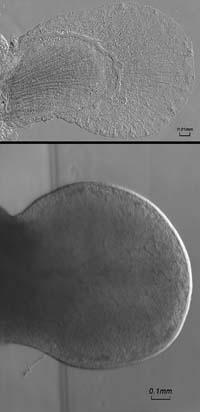Disappearance of genes to evolve

The process of creating limbs from the fins of fish is associated with the loss of two genes
Some 365 million years ago, the fins of some species of fish became arms and legs. Several biologists at the University of Ottawa have discovered that this process is related to the disappearance of two genes. However, they do not know what was first, the disappearance of genes or the transformation of fins into extremities.
However, biologists know that a family of fish genes -and geneales- controls the mechanism that stiffens fins. According to experiments on zebra fish, silenced these genes, fish does not produce the protein actinodine, a molecule that forms rigid fibers. In addition, biologists have discovered that there is no gender in tetrapods. But in fish, they are common genes.
Since tetrapods come from fish, scientists have concluded that they have been lost in the evolution of tetrapods. Therefore, this study shows that gene loss is a resource of evolution.





